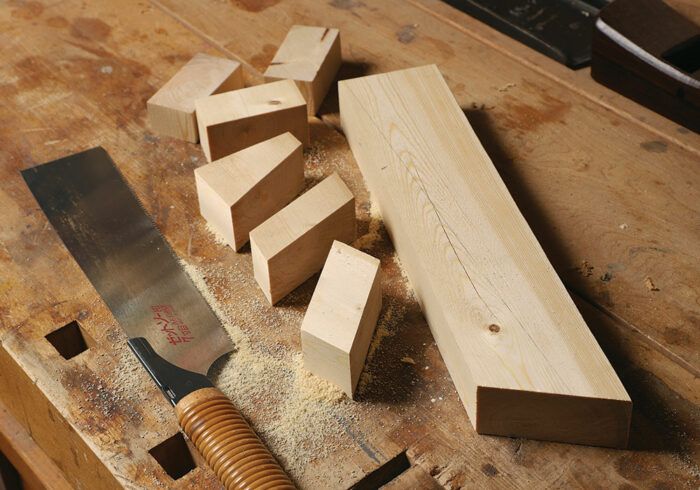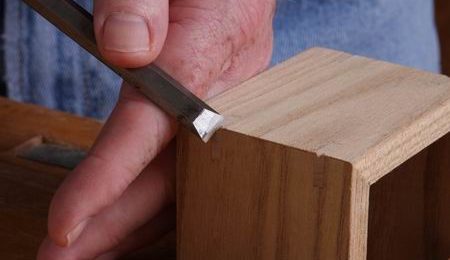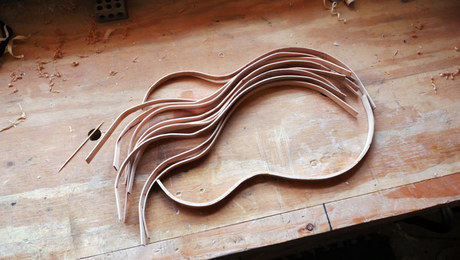In praise of mistakes
Though it may be tempting to forget your mistakes, it's probably more useful to embrace them and use them as teachers.
Synopsis: Mastering a craft is not a matter of becoming infallible, but of making errors and learning from them. Though it may be tempting to forget your mistakes, it’s probably more useful to embrace them and use them as teachers.
I recently read Vasko Sotirov’s essay “My mistake” (FWW #302), about his intolerance for errors. I understood his reaction. I’ve had more than one experience where I wanted to throw my clamps across the shop. But while I can identify with what he’s written, I tend to look upon errors more fondly.
Mistakes have been essential in my development as a woodworker. We all learn from others: from lectures, books, videos, demonstrations, conversations. But some things cannot be learned this way. No teacher can have the sensations in your hands and body for you. You cannot master your craft by attending a lecture (though I recommend you try). You have to get your hands dirty. You have to make errors.
My interest in the link between errors and learning goes back to my early 20s, when I was a tennis instructor. I had been trained by Chester Murphy, tennis coach at UCal Berkeley and a nationally recognized teacher of tennis teachers. He talked about how your body creates speed and spin. And about the importance of working backward from the result of a shot to make corrections. I absorbed these lessons well—and taught them to my tennis students.
When I started learning how to use hand tools, I replaced a tennis racquet with a handsaw. I realized I had to figure out how to use my body to get the tool to do what I wanted. How to hold the saw, how to stand, how to look at the wood and the saw. I started to use my knowledge of kinetics and to think about learning woodworking like learning a sport. There was quite a bit of experimentation, and endless errors. In tennis, the flight of the ball tells you whether you’ve struck it well or badly; with a handsaw it’s the sawn surface that does the telling: Is it smooth, is it straight, is it flat, is it square?
After I purchased my first flexible Japanese handsaw and used it on a project, I quickly realized I could not control the cut. So I got scraps of wood and started cutting them up. This was not practice, this was research. This was purposeful play. I made shallow cuts, deep cuts, angled ripcuts, through crosscuts in thin and thick stock. I experimented with body positions, elbow positions, hand positions. I tried relaxed grips and tight grips, grips all along the handle. I changed the angle of the saw stroke to see what would happen; I tried rocking the saw. I sawed with my eyes closed so I could better hear the saw and feel the vibrations. I experimented with breathing. I compared sawing slow to sawing fast. I wondered if my sawing was better in the morning when
I was fresh or at the end of the day when I was tired. Anything that might present a problem or produce a solution I tried. After each cut, I would examine the quality of the surface left behind. I was not trying to make mistakes. To the contrary. But mistakes were welcome guests. They showed me how to use the saw. After a bit more than two weeks, I began to understand the things that gave me a predictable result. I just needed practice now. It would have been nearly impossible to get this kind of concentrated learning experience in the context of a project with a lot of time invested and precious materials on the line. But by sawing scrap, I had created a safe space where mistakes became my mentor.
Mastering a craft isn’t a matter of becoming infallible, but of learning to make constant corrections for small errors. If you balance a yardstick vertically on two fingers and it stays up, look at the top of the yardstick: It’s almost completely still. But look down at your fingers: They are moving in and out, side to side, up and down. You are making constant corrections … for errors. The errors are almost limitless. The better you get at balancing the yardstick, the smaller the corrections you have to make. But they never go away completely, no matter how good you get. For both the novice and the master, errors are essential.
—Carl Swensson makes his furniture and his errors in Baltimore.
 |
My mistakeNobody likes to make mistakes, but most of us probably don’t deal with them as drastically as does Vasko Sotirov. |
 |
Made a mistake? Celebrate it!How a mistake changed a design for the better. |
 |
Editor’s letter: The fear of failureBen Strano argues that you’ll become a better woodworker when you accept and expect that mistakes will happen. |


















Comments
Carl. Great commentary on the essay. My wood working became much more enjoyable when I factored in any new (or ‘been a long time since I”) activities included a few pieces of scrap experimenting and practice. My purchase of a CNC machine taught me I need to do something at least 3 times before it looks decent. Anything less is luck. Occasionally it’s more than 3 times. That change in attitude has really improved the output of my woodworking. And the experiment scrap does well in the beach fires after the lessons are learned !
Coincidentally, a few days ago I wrote a slightly different point of view regarding "mistakes" in the Forum:
It's inevitable that things will go wrong during the build process. It may be your fault, the wood's fault, or a tool's fault. But every misstep you encounter during the process gives you an opportunity to actually improve the piece.
I know that sounds counter intuitive but I find it to be true if you have the right attitude. While trimming the waste on the drawer dovetails I accidentally cut out a pin instead of a tail. I had no more bird's eye maple left so I couldn't remake the drawer front. So I had to figure out a way to fill the void adjacent to the shortened drawer front. I decided to add a piece with holes in it to accommodate a pen, pencil, sharpie and an exacto knife. Besides making the piece more functional the asymmetry made it more visually interesting.
Log in or create an account to post a comment.
Sign up Log in